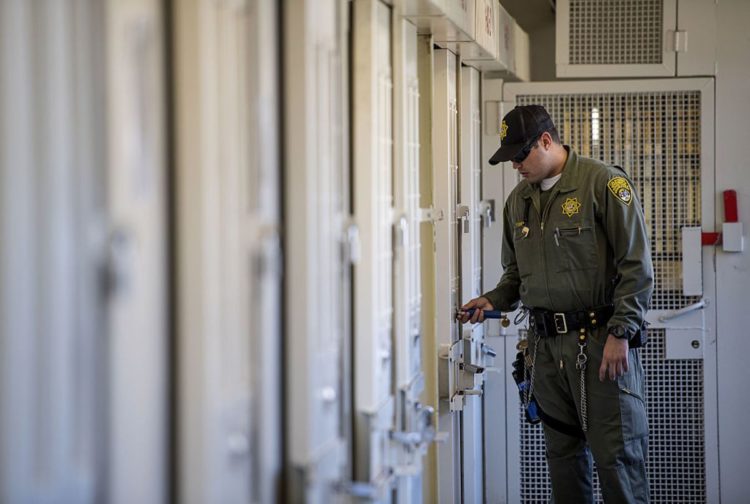*Another Explanation for the U.S. Incarceration Boom: Justin Fox

published Oct 20th 2016, 1:47 pm, by Justin Fox
(Bloomberg View) —
In 1999, the unemployment rate in the U.S. was just 4.2 percent, compared with 8.6 percent in Germany and 11.3 percent in France. The labor force participation rate (the percentage of the working-age population either with jobs or actively looking for them) was substantially higher in the U.S. than in those countries, too.
The standard explanation that economists offered for this disparity was that U.S. labor markets were less heavily regulated than those in Europe. As sociologists Bruce Western and Katherine Beckett summarized in the American Journal of Sociology in 1999:
In this model, job seeking is intensified by meager state support for the unemployed, and low unionization allows wages to adjust to market conditions. In Europe, institutions introduce inefficiency: large welfare states and strong unions stifle labor demand and reduce work incentives.
Western and Beckett had a different hypothesis. The U.S. had actually engaged in a “sizeable, nonmarket reallocation of labor” in the 1980s and 1990s, they wrote — by throwing huge numbers of men into prison.
Our central argument is that U.S. incarceration lowers conventional measures of unemployment in the short run by concealing joblessness among able-bodied, working-age men, but it raises unemployment in the long run by damaging the job prospects of ex-convicts after release.
Subsequent labor market developments appear to have borne this out. The U.S. unemployment rate, at 5 percent in September, still looks good — it’s a little higher than Germany’s, if you go by the harmonized rates that adjust for differences in national unemployment definitions, and a lot lower than France’s. But as has been discussed at great length this election season, this number fails to reflect the fact that millions of Americans have stopped looking for jobs, and thus aren’t counted as unemployed. The U.S. labor force participation rate, among the world’s highest in the 1990s, now lags that of many other wealthy countries.
So, first, three cheers for Western and Beckett! With economist Nicholas Eberstadt of the conservative American Enterprise Institute concluding in his new examination of the falling male labor force participation rate that the much-higher incarceration rate here is the single best explanation for the growing labor force disparities between the U.S. and other countries, I think we have to give the sociologists a win over the economists here.
Where do we go from there? In my column about Eberstadt’s research couple of weeks ago, I concluded that “prison and sentencing reform” might be the ticket to bringing men back in the workforce. This reform movement is under way — a bipartisan effort to fight imprisonment for drug crimes, roll back mandatory sentencing minimums and halt the spread of private prisons, among other things.
Since writing that I’ve begun to wonder, though, whether the reformers have accepted yet another standard explanation that turns out to be wrong, or at least incomplete. This is partly because of feedback I got from readers who say that it’s convictions, not just incarceration, that damage people’s labor market prospects. And it’s also because I’ve been reading the work of John Pfaff, an economist who teaches at Fordham University School of Law in New York and argues that the “standard story” of why prison populations exploded in the U.S. in the 1980s and 1990s (and why they are declining slightly now) doesn’t really explain much.
The growth of private prisons is largely irrelevant, Pfaff says — there’s no connection between their presence in a state and higher incarceration rates. And while tougher drug laws and longer sentencing minimums have increased prison populations, Pfaff concludes that they account for only a small part of the overall rise. What explains the rest? I’m oversimplifying here, but it basically comes down to two things:
A sharp increase in crime from the 1960s through 1980s. A subsequent sharp increase in the numbers and aggressiveness of prosecutors.
It was a delayed reaction, which kept playing out even as crime rates began to plummet after 1990. Here’s a remarkable statistic that Pfaff shared Wednesday in a lecture at John Jay College of Criminal Justice in New York: From 1974 to 1990, as crime rose, the number of assistant district attorneys in the U.S. rose with it, from 17,000 to 20,000. From 1990 to 2007, as crime fell, the number of assistant DAs kept rising to 25,000, and the overall number of local prosecutors rose to 30,000.
That’s a lot of people whose job it is to convict other people! As Pfaff put it Wednesday, “They can’t play Minecraft all day.”
This Rise of the Prosecutors was a locally driven phenomenon with national implications. In most states, district attorneys are elected, usually at the county level. They’re funded locally, too. Voters and district attorneys in some urban areas have recently become less enamored of the lock-’em-up approach. But Pfaff has seen no sign of a national shift.
Which leaves us with, on the one hand, a growing recognition that the U.S. conviction/incarceration boom has brought huge costs and, on the other, no clear path to undoing it.
This column does not necessarily reflect the opinion of the editorial board or Bloomberg LP and its owners.
*********************************
Thanks to Mr. Obama and Hillary Clinton, incarceration rates are up? We I guess that all those people that they put out of work can become prison guards, if they are not inmates. —-W.



No Comment